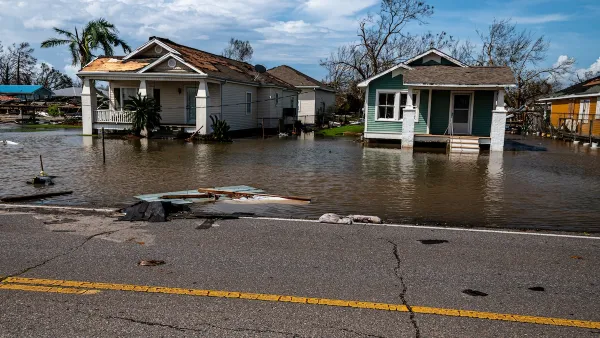In the face of a ballooning national debt and possibly impending oil shocks, the city can rest assured that its public transit network provides residents with a little breathing room.
"Not much has changed since the cold war." "The nonstop message is, Be afraid, be very afraid."
"It was therefore almost pleasant to learn this week that we are not entirely unprepared for coming ordeals. Mind you, we are not talking here about problems on the scale of terrorism or nuclear annihilation. Still, they are serious matters."
Some news is actually encouraging, such as "word this week that if oil prices soar out of sight -- say, to an entirely feasible $100 a barrel -- no American city is in better shape than New York to withstand the economic shock. So says SustainLane.com, an online service that develops strategies for what is known as 'sustainable living.'
Grit your teeth all you want on that packed No. 6 train. But our mass-transit system, plus our willingness to walk, will ease the sting the next time oil prices zoom because the Middle East goes haywire or a hurricane devastates the Gulf of Mexico. New York 'is really the only city in the United States where people ride rather than drive to work and to get to school and other activities,' said Warren Karlenzig, SustainLane's chief strategy officer.
It was comforting to hear. Granted, rising debts and oil prices are hardly comparable to nuclear nightmares. But wouldn't you rather dwell on them than on sitting below ground somewhere like a mole, munching on stale crackers for 50 years?"
[Editor's note: This article is available only through subscription.]
FULL STORY: We Will Bury You, in Debt

Planetizen Federal Action Tracker
A weekly monitor of how Trump’s orders and actions are impacting planners and planning in America.

Vehicle-related Deaths Drop 29% in Richmond, VA
The seventh year of the city's Vision Zero strategy also cut the number of people killed in alcohol-related crashes by half.

As Trump Phases Out FEMA, Is It Time to Flee the Floodplains?
With less federal funding available for disaster relief efforts, the need to relocate at-risk communities is more urgent than ever.

Texas Safety Advocates Raise Alarm in Advance of Tesla Robotaxi Launch
The company plans to deploy self-driving taxis in Austin with no oversight from state or local transportation agencies.

How to Fund SF’s Muni Without Cutting Service
Three solutions for bridging the San Francisco transit agency’s budget gap without reducing service for transit-dependent riders.

Austin Tests Self-Driving Bus
Autonomous buses could improve bus yard operations for electric fleets, according to CapMetro.
Urban Design for Planners 1: Software Tools
This six-course series explores essential urban design concepts using open source software and equips planners with the tools they need to participate fully in the urban design process.
Planning for Universal Design
Learn the tools for implementing Universal Design in planning regulations.
Borough of Carlisle
Smith Gee Studio
City of Camden Redevelopment Agency
City of Astoria
Transportation Research & Education Center (TREC) at Portland State University
City of Camden Redevelopment Agency
Municipality of Princeton (NJ)


























